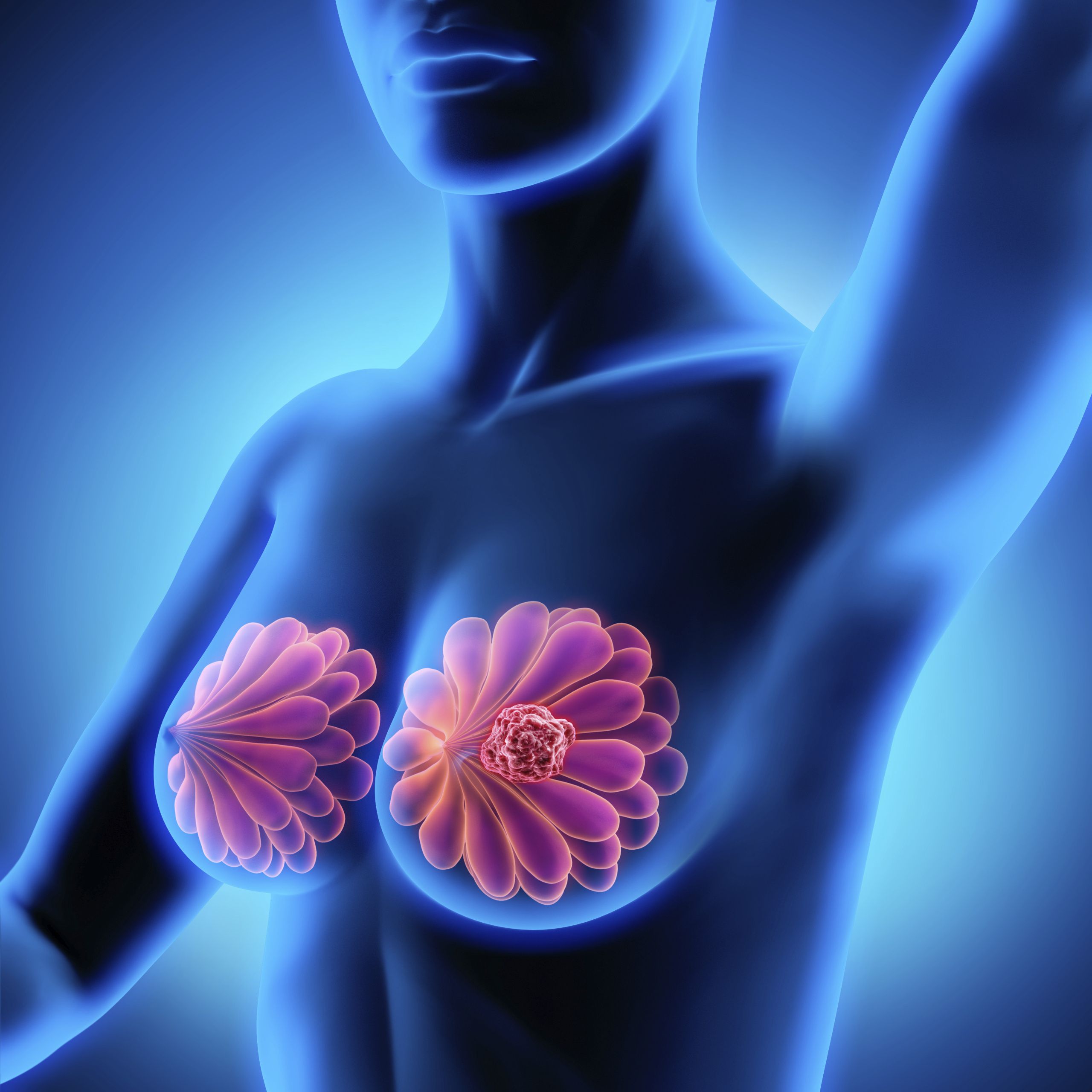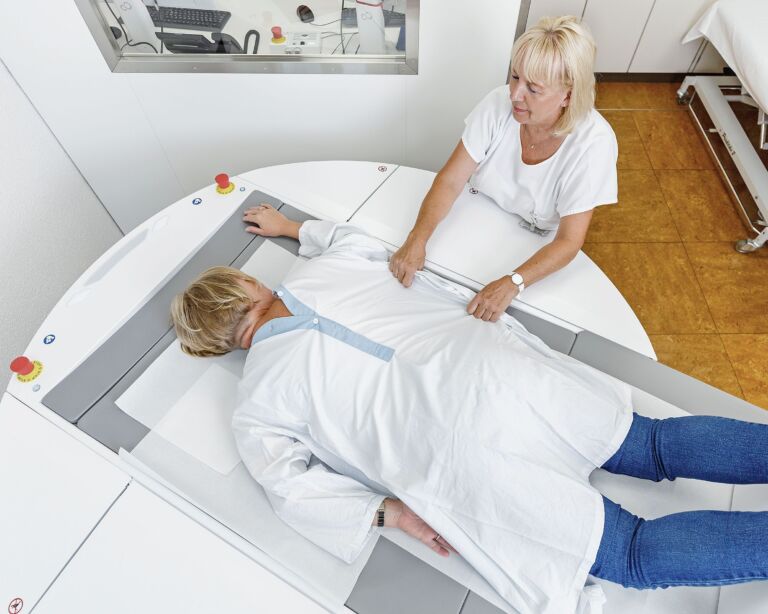Overview: What are breast cysts?
Breast cysts are cavities in the breast tissue that contain fluid and are surrounded by a capsule. Some women have only isolated cysts in the breast, while others have many. They can remain small, but also grow to a considerable size. Many do not feel breast cysts. Only when they become very large, they can cause discomfort. Then they are often palpable from the outside.
Cysts are divided into simple (uncomplicated) and complex or complicated cysts. Both differ in their design and the structures inside.
Breast cysts – frequency and age
Cysts in the breast are among the most common benign breast lesions. In most women, breast cysts develop between the ages of 30 and 50.
Breast cysts: causes are different
Breast cysts can have various causes. They often occur in the setting of mastopathy, a benign breast disease. In cystic mastopathy, the glandular cells grow particularly strongly and produce more fluid. As a result, many, usually small cysts form in the glandular lobules. Their size can vary significantly due to hormonal influences in the monthly cycle. Sometimes the size does not change. Breast cysts can also be detected in fibrocystic mastopathy. Here, however, the connective tissue also multiplies.
In addition, breast cysts can also have the following causes:
- Clogged excretory ducts of the gland lobules – then fluid accumulates there and cysts form.
- Breast tissue injuries, often due to chronic inflammation of the breast. This damages the milk ducts and small vessels through which the body removes tissue fluid. The cysts are then permanently present.
- Injuries to the fatty tissue, such as from surgery or an accident. A bump or bruise causes fat cells to form what are called oil cysts. They contain tissue secretion and larger amounts of fat. Such cysts are always benign.
- Sometimes the predisposition to the formation of breast cysts is also congenital.

Symptoms: Breast cysts often go unnoticed
Breast cysts usually do not cause any symptoms. Therefore, many women do not notice the fluid-filled blisters in the breast. However, when they reach a certain size, they can be felt from the outside. A cyst usually feels round and bulging. In addition, the “node” is movable and can be moved.
Large breast cysts press on the surrounding tissue and can thus cause discomfort. In many cases, breast pain is related to the menstrual cycle, such as in mastopathy.
Breast cysts: diagnosis with us
See your gynecologist if you feel any unusual changes or lumps in your breast. In most cases they are harmless, but not always. The diagnosis of breast cysts always begins with a discussion of the patient’s medical history, the anamnesis. For example, the following questions are important:
- What complaints do you have, since when and how intense are they?
- Have you noticed any changes in your breast? Which?
- Are the symptoms related to the menstrual cycle or are you independent of it?
- Do you have any known diseases? If yes: Which ones?
- Are there any diseases in your family, for example breast cancer?
- Do you take medication regularly? If yes: Which ones?
Then both breasts are carefully palpated with the hands. In this way, changes and nodes can be tracked down and checked. It is assessed whether these are movable or cannot be moved. Further procedures then follow to further clarify these palpatory findings.
Ultrasound examination of the breast (breast ultrasound = mammasonography): The method works with sound waves that are harmless to health. A transducer emits them and the tissue reflects them to different degrees – depending on the density. Breast cysts can be detected very well on ultrasound. Because they are filled with liquid, they appear dark. We can determine the location of the cysts and measure their size.
- Mammography: In case of ambiguity, a mammogram can be supplemented and provide further clues. This breast X-ray may reveal other breast changes, such as calcifications in the breast, evidence of breast cancer, or precancerous breast lesions. Mammography is not a routine examination in the diagnosis of breast cysts.
In principle, there are two types of cysts:
- Simple (uncomplicated) cyst: the wall is smooth and limited, no structures are detectable inside the cyst.
- Complicated and complex cyst: Structures have formed inside the cyst, for example, partition walls or support on the inner wall of the cyst.
Breast cysts: prevention, early detection, prognosis
There are no known measures you can take to prevent breast cysts. Often they arise in the context of mastopathy, from which you also can not protect yourself. Also, there are no special measures for early detection of breast cysts. They are usually harmless and in most cases do not cause any symptoms.
Nevertheless, the general advice is: if you notice any change in your breast (for example, lumps, hardening, secretion from the nipple, change in size), consult your doctor and have it clarified. Most often they are benign, but not always. If breast cancer is found at an early stage, it can be treated well and the chances of cure are very good.
Breast cysts: treatment often unnecessary
Treatment of simple breast cysts is not necessary in most cases. Checks of cysts are recommended by the physician depending on the size, age of the patient and symptoms.
For large cysts that cause symptoms, a puncture may help. In this procedure, the fluid is sucked out of the cyst with the help of a thin needle. This relieves the adjacent tissue.


